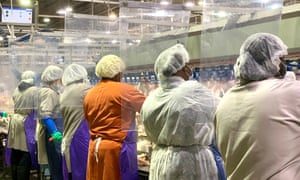The Community Alliance for Global Justice (CAGJ) is a fitting organization to pair with our course because they do an amalgamation of work, spanning all sorts of different topics and issues with the central goal of spreading sustainability, democracy, fair agricultural practice, and social justice. They don’t do one thing, the same way this class isn’t about one subject. It’s more about a set of values and goals that guide you from topic to topic, issue to issue.
Our fundraising work and Fair Trade project did little to further my understanding of systems thinking. I’m coming away from the project with a vastly deeper understanding of the Fair Trade model and its benefits but I don’t feel like the work helped me to better understand the way world trade works all that much. I don’t mean this in a bad way though because it was work. Moreover, it was a service. It was unpaid and somewhat thankless intern work, not done for our own personal growth but for a greater cause. Cold-calling local businesses weakened by the global pandemic and asking for small donations for a fundraising event that they may not even be able to attend did little to further my formal education, but it taught me a valuable lesson about how the topics of our class can look in the real world, not to mention during a crisis. Nonprofit work isn’t always glamorous and that’s a valuable lesson when seeking a degree in the social sciences.
The obvious parallel between our project and course material is the Fair Trade research we did for CAGJ’s website. Our research was mostly surface-level, just getting a solid overview of the Fair Trade model and listing different products and brands, however our knowledge of the deeply rooted problems of the free trade model came in handy. “The Real Reasons for Hunger” by Vandana Shiva and “Agricultural Trade Liberalization” by Jennifer Clapp helped me understand the need for such a model brought on by the unjust trade policies by the WTO. Early in the quarter, not knowing what would take place a month later, our CAGJ supervisors had us watch a documentary about Seattle’s 1999 WTO protests, which, after telling us how bad Seattle police are at handling demonstrations, showed how effective protest can be. The 1999 protests prevented the WTO from holding negotiations and forced the world to examine the costs of globalization. Now shockingly similar photos have come out of the last two weeks, and already major police reforms have been promised.
So much of our class was focused on the macro – the big picture of the global food system and the endless moving parts that make it tick. Our project focused on the micro. One Seattle nonprofit with a staff small enough you could count them on your hands, doing what they can to stay afloat while educating their community on a better way to exchange goods. You can’t solve a problem without understanding the system it’s a part of, and you can’t understand the system without getting to know the individual actors working within it.






 (Jordan, 2020)
(Jordan, 2020)